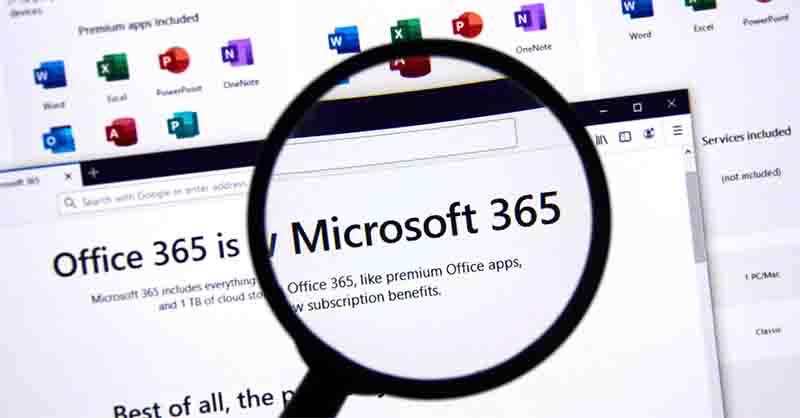One of the most significant shifts in work culture since the Industrial Revolution has been the transition to remote work in the previous 18 months. We've been doing frequent research and internal polls to better understand how this shift is affecting our customers and Microsoft workers. According to survey data, in a year when we sent 160,000 workers home to work and remotely onboarded 25,000 new employees, the proportion of Microsoft employees who report feeling involved is at an all-time high of 90 percent, as revealed in our latest Work Trend Index.
However, in the increasingly complicated world of hybrid work, there's no assurance that this tendency will continue. To begin with, employee expectations have shifted. While 73 percent of workers desire the flexibility to continue working remotely, 67 percent want greater in-person involvement, according to the Work Trend Index study from last year. This mixed work contradiction is our new normal, and coming together without preparation will be difficult.
Most businesses are unprepared when employees transition to a mode where they split their time between in-person and remote work. Working in a hybrid environment is difficult. Attendees from afar are going unnoticed and unheard. Attendees in person desire to be inclusive, but they lack the skills to organize good hybrid meetings. One obvious example is that conference rooms, which will host the bulk of hybrid meetings, lack the necessary technology, software, and furnishings to properly enable hybrid meetings. Only 7.8% of the approximately 90 million meeting rooms globally are video-enabled, according to Frost & Sullivan1, resulting in a terrible experience for remote participants.
We're still learning, just like you, but in our experience, hybrid meetings are critical to establishing a thriving work culture. Hybrid meetings, when done properly, make everyone feel included while also providing the environment and resources for improved connections, collaborations, and productivity. We've identified three "ABC" practices that most businesses can use right now to enable inclusive meetings and provide the groundwork for a flexible work culture:
🟪When the room doesn't have a centralized A/V system, utilize a Microsoft Teams approved speaker puck to guarantee everyone can be heard when speaking.
🟪Bring your laptop: If you're attending the meeting in person, bring your laptop and join the meeting with your camera turned on and your microphone and audio turned off. Everyone may take part in meetings through conversations, live comments, and raising hands, which has become the new norm.
🟪Collaborate: Each hybrid meeting should have a meeting facilitator present. By regulating the meeting discussion, raising hands, allowing material to be immediately delivered through the Teams meeting, the facilitator guarantees that all attendees participate and collaborate.
Microsoft is dedicated to investing in hybrid innovation as we all continue to learn and offer practical advice in this new world of work. Let's take a look at some of the new capabilities in Microsoft Teams and Office 365 that are designed to accommodate workers' various requirements and work styles, regardless of where they work.
Office environments that are built for everyone, not only in-person attendance
There are three unique technologies that power new category of intelligent cameras:
🟨Active speaker tracking enabled by AI, which allows in-room cameras to recognize who is speaking in the room based on audio, facial movements, and gestures, and zoom in for a better view.
🟨In-room participants can be put in their own video window thanks to multiple video feeds.
🟨People identification, which will recognize and show enrolled users' profile names in their video pane.

You can provide more equal meeting experiences where everyone feels visible and represented when intelligent cameras are used with Dynamic View in Teams. Teams changes different parts of the meeting as individuals join it, so distant members can see the room and information well.
We're upgrading companion mode on Teams mobile to provide in-room attendees rapid access to engagement tools like chat, live reactions, and Microsoft Whiteboard, so they can contribute more dynamically. We're also making it simpler to access meeting and device controls, such as joining a meeting, casting a PowerPoint, muting the room, turning on and off room cameras, and more. In the next months, the new companion mode experience will be accessible.
It will also be simpler to arrange meetings and collaborate. New capabilities in Outlook track when and where teammates are working, as well as how they will participate in meetings. Working hours has been updated to allow you to add work schedule details right in your calendar, letting people know when and where you'll be working. People may now indicate whether they will attend a meeting in person or online, allowing meeting planners to better prepare by scheduling a space with video conferencing capabilities or bringing a speaker puck. Early next year, Outlook will begin bringing out new hybrid work experiences.
People may find and book flexible workplaces in the office using the hot desking experience on Microsoft Teams screens. Access your own Teams calendar, chats, meetings, and more by booking a space from your smartphone or in advance using Outlook or Teams. When hot-desking, teams displays may be used as a standalone device or as a second screen, and all personal information is erased from the device when you sign out. By the end of 2021, Lenovo ThinkSmart view is anticipated to offer this experience.
Remote meetings that are as effective as being in person
We're constantly striving to find innovative methods to work. We envisage a future free of the meeting grid, where all users have more options and flexibility, and presenters are empowered to provide their best. We want all users to be there, collectively, in everything from expressive avatars to immersive meetings.
Many people used to prefer to deliver crucial presentations in person, but we're investing to make remote presentations as successful and immersive as possible. Hybrid presentations aren't only about providing material; they also use nonverbal social cues like facial expressions and gestures to engage the audience. Cameo is an unique PowerPoint experience that incorporates your Teams camera stream seamlessly into your presentation, allowing you to control how and where it appears on your slides and providing layout ideas for best viewing. Use PowerPoint Live in Teams for an immersive remote presentation when it's time to present. Cameo will be available in early 2022.
Stay in the flow of work with Microsoft Teams
Flexibility comes from knowing that you are always linked to your colleagues and job, regardless of where you work. The latest Teams features combine your favorite apps and experiences together to help you stay productive, focused, and connected when working in a hybrid environment.
With Apple Car Play coming to Microsoft Teams, you can now join Teams meetings and make calls hands-free on the road using Siri.
Microsoft Viva integrates collaboration, information, insights, and learning into the workday. You may remain up to date on business news and resources straight from Teams via Viva Connections. Personalized announcements, business chats, and a dashboard of tools for tasks such as completing a daily health check or spending reports may all be found here.
Using apps in team meetings allows for real-time participation, which improves cooperation and makes it more enjoyable. In the meeting stage, you may now exchange and interact with app content, allowing for scenarios like real-time visual problem-solving and brainstorming. Start with Miro, MURAL, Lucidspark, and Freehand, with many more applications on the way.









